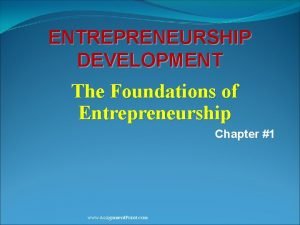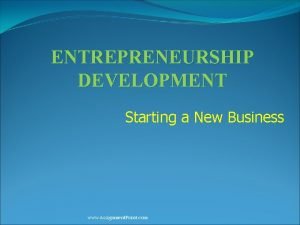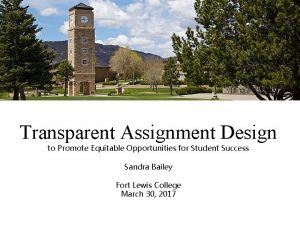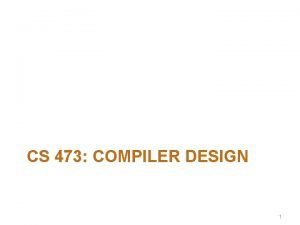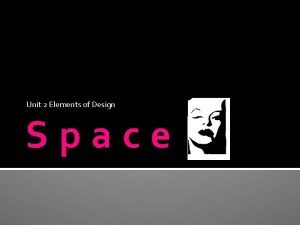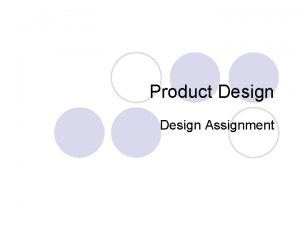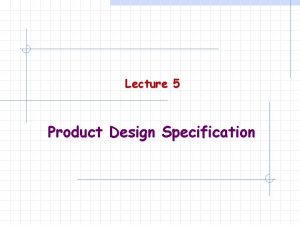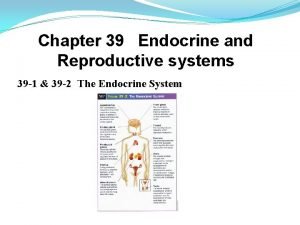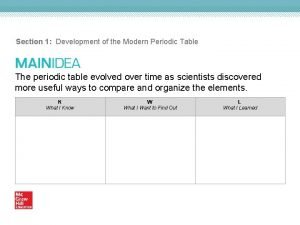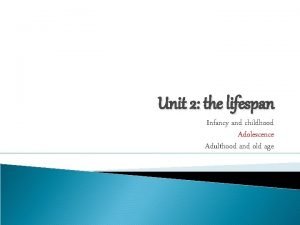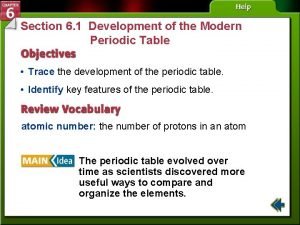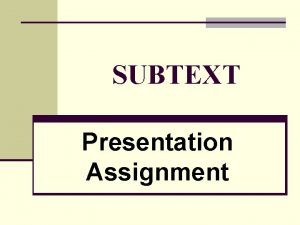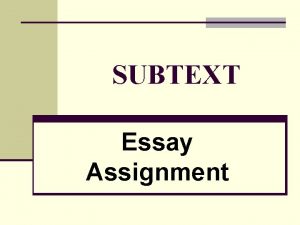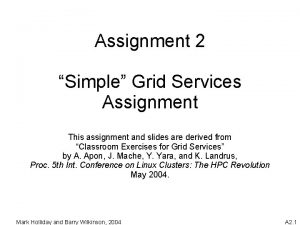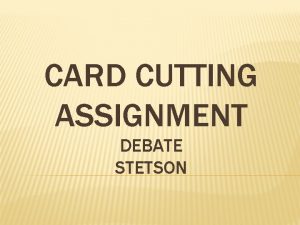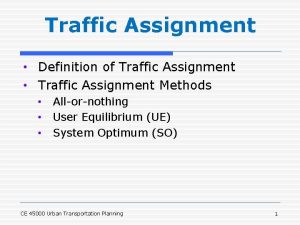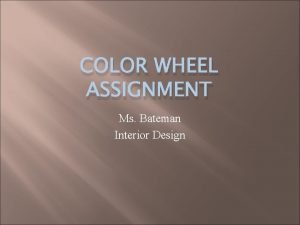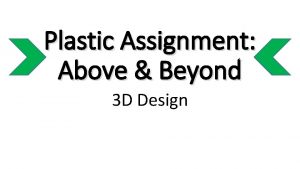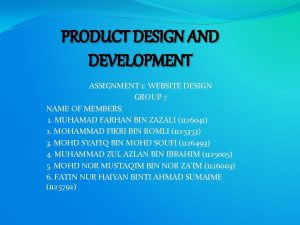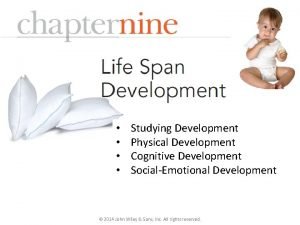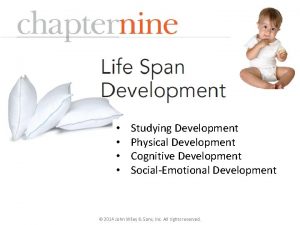Design Assignment Section 2 Design Development Section 2

















- Slides: 17

Design Assignment Section 2 Design Development

Section 2: Design Development Useful Skills: Reconciliation of design factors, Analysis, evaluation, awareness, appreciation and synthesis. Useful knowledge: Relationship of design factors, enhanced knowledge of design factors, deeper understanding of the design process, detailed knowledge of materials, construction and manufacture. As with idea generation, the key to doing well is planning, preparation and research. Don’t leave anything to chance.

Section 2: Design Development In developing your design proposal follow these points: n Design proposal will be clearly derived from initial idea(s) and/or concept. n Most promising idea(s) and/or concept explored and evaluated into detailed design proposal. n Clear evidence of diversity in exploration of potential solution n Meaningful reference to specification at appropriate points. n Materials and manufacturing processes for proposal are clear and justified. n Clear understanding or design issues evident. n Design proposal clearly evaluated by extensive reference to specification.

Selecting a Promising Idea Begin by identifying which idea has most potential for development towards your solution. Remember it may not be your favourite or best! It is the knowledge and ability to change, improve, and progress your idea that is assessed. Chose one that will make it easy. Simple evaluation at this stage using specification as a bench mark is not always informative or useful. It is likely that all ideas meet the specification. It may be better to ask the questions that follow, this activity will highlight the idea with most potential and will focus on development factors

Initial Evaluation Try evaluating your ideas using the following questions. You may need to change, add or ignore some points depending on the design task: n Could the function be improved upon to make it more suited to the purpose? n Could the aesthetics be improved? n Could it be easier to use? n Could the design present any safety issues n Could the design be manufactured? n Could the design be improved to better suite the environment?

A Methodical Approach Using these questions with the specification should enable you to make an informed choice for your design. If your still not sure. Have you really been thorough and rigorous? Clearly defined areas to work on will make design development far easier and productive. It creates opportunities for preparation and research that can be carried out in advance, areas such as function, aesthetics, ergonomics, safety, manufacture, construction and materials. As the development progresses the function will move away from the general function, aesthetics and environment considerations, becoming more concerned on details relating to issues such as ergonomics, anthropometrics, manufacturing limitations, construction, safety issues materials, size and scale

A Methodical Approach Development section causes most concern and often attempted in a haphazard way. Remember to limit the need for inspiration alone, replace it with more reliable methodical approach. Focus the development around a range of factors relevant to the design task. Use initial evaluation questions again to highlight areas to be developed. Don’t base all development around one factor, this will lead to simplistic development lacking depth and maturity. Considering more factors will give more opportunity to experiment, explore, improve, justify and reason, all of which will gain more marks for the section

Constant Evaluation Good development relies on constant evaluation and re -evaluation of all changes and decisions made. You don’t have to make constant improvements as may of the changes made may have little or no effect, or could prove you where right in the first place.

Useful forms of Development Constituent Development Avoid making whole scale changes to your design idea, as this could lead to another concept rather than a improvement. Development should be about exploring possibilities not redesign. Complete change makes evaluation vague and generic and fails to generate focus. The examiner should be able to chart changes and decisions from your initial ideas to your final proposal. Think of working on a story board showing each step you have taken to reach your final solution.

Useful forms of Development Focused Development Remember the examiner needs to know and have a clear understanding of design issues. To do this you will first have to select relevant issues. Use the research, analysis and specification, together with your own evaluation to ID design issues that you feel are important. Annotate to explain why you feel your design could be enhanced as this will gain you marks as the examiner will see you are communicating reasons and justifications. Work on one factor at a time as this allows better judgment about their effects. Analysing the effect has on the others can offer interesting development opportunities. This is sometimes referred to as getting a balanced design.

Useful forms of Development Ergonomic Development A more detailed exploration that will benefit from additional research. Human interaction is always an important aspect of the design, is easy to understand incorporate into a development. It will have a influence on issues such as Function n Anthropometrics n Size and scale n Safety n Materials Usually the primary reason for ergonomics is to make the product easier or better to use. Make this your goal if you decide to include this form of development. n

Useful forms of Development Reconciliation development This form of development will show that you have greater depth of understanding and lead to enhanced reasoning and justification, also generating evidence of diversity and exploration. Making a simple change to one element will have an impact on all other factors. For example just changing the function could effect the aesthetics, materials, method of manufacture, construction methods, leading to safety issues etc.

Useful forms of Development Reconciliation development (cont) Typical influence chains may be: n n n Function will impact on aesthetics, ergonomics, choice of materials, construction and manufacture Aesthetics will be determined by environment, intended target market. Choice of materials will be influenced by product function, e. g. strength, rigidity, ductility, weight, durability, hygiene, construction, manufacture. Manufacture will be influenced by materials, quantity required, accuracy. Construction depends on materials, basic functions method of manufacture.

Useful forms of Development Trial Development Don’t be afraid to experiment. Good design is created from asking “what if” rather than “that’s it”. Change for changes sake is not always a waste of time, it can stimulate creative ideas, especially if you run into a mental block. Simply turning an idea on its head (literally) can stimulate an idea. Radical changes usually work best for this activity.

Useful forms of Development Manufacturing Development Essential in development but should not be the only form of development. Only considering manufacture as development the project will lack depth and be difficult to explore potential solutions. Manufacturing development is very technical in nature and will become more important as your design nears completion, but don’t leave the considerations to last. Good understanding of manufacture and materials should be evident throughout your development. Make sure you highlight any limiting factors min the research or specification that could influence the designs manufacture, i. e. cost or number of items required. Remember some manufacturing techniques will not be suitable.

Working to Scale Beginning to work to scale can cause problems for the designer. Don’t consider it at the end of the design, what looks good in a small sketch can become featureless when drawn to scale and faults can often be exposed. Using models can help, giving greater potential to analyse and evaluate due to the 3 D form. They are essential to assess human interaction as they offer the potential for actual interaction. They can be used to test ideas that may only be good in theory, also making a model will generate a better understanding and encourage development. Be sure to record any changes made to your model, take lots of pictures and write down what made you change the design, remember the examiner is interested in your thoughts and opinions.

Appropriate Means of Communication for Development n n n n n More detail in 2 D sketches, use of scale to zoom in on detail, sectional views to explore and display construction and interior workings. Increased use of 3 D sketching with more detail and refinements to explore form and function with more realism. Exploded views to display information about construction. Block and scale models to explore aesthetics and complex 3 D forms. More detailed full size models or prototypes for testing. Increased use of colour and rendering. Scale models as a means to evaluate and develop design and an excellent way of communicating design ideas if recorded properly. Experiments with anthropometrics require scale drawings if to have any real meaning. They don’t have to be formal, sketches will do. Computer generated graphics are also useful as they can generate more insight to the design and highlight possible problems or areas of further development.
 Foundation of entrepreneurship development
Foundation of entrepreneurship development Entrepreneurship development meaning
Entrepreneurship development meaning Transparent assignment template
Transparent assignment template Join point
Join point Elements of design space
Elements of design space Product design assignment
Product design assignment Static single assignment form
Static single assignment form Pugh product design specification
Pugh product design specification What is the history of community development
What is the history of community development Development that ended much development crossword
Development that ended much development crossword Development of truncated cylinder
Development of truncated cylinder Section 39-4 fertilization and development
Section 39-4 fertilization and development Ovulation animation
Ovulation animation Section 1 development of the modern periodic table
Section 1 development of the modern periodic table Lesson quiz 4-2 adolescence answer key
Lesson quiz 4-2 adolescence answer key Section 6.1 development of the modern periodic table
Section 6.1 development of the modern periodic table Etl design and development
Etl design and development Food product development ideas
Food product development ideas
